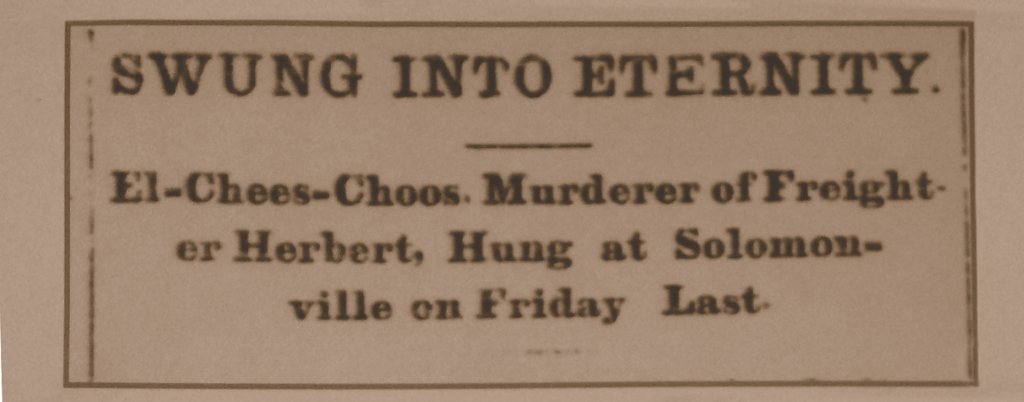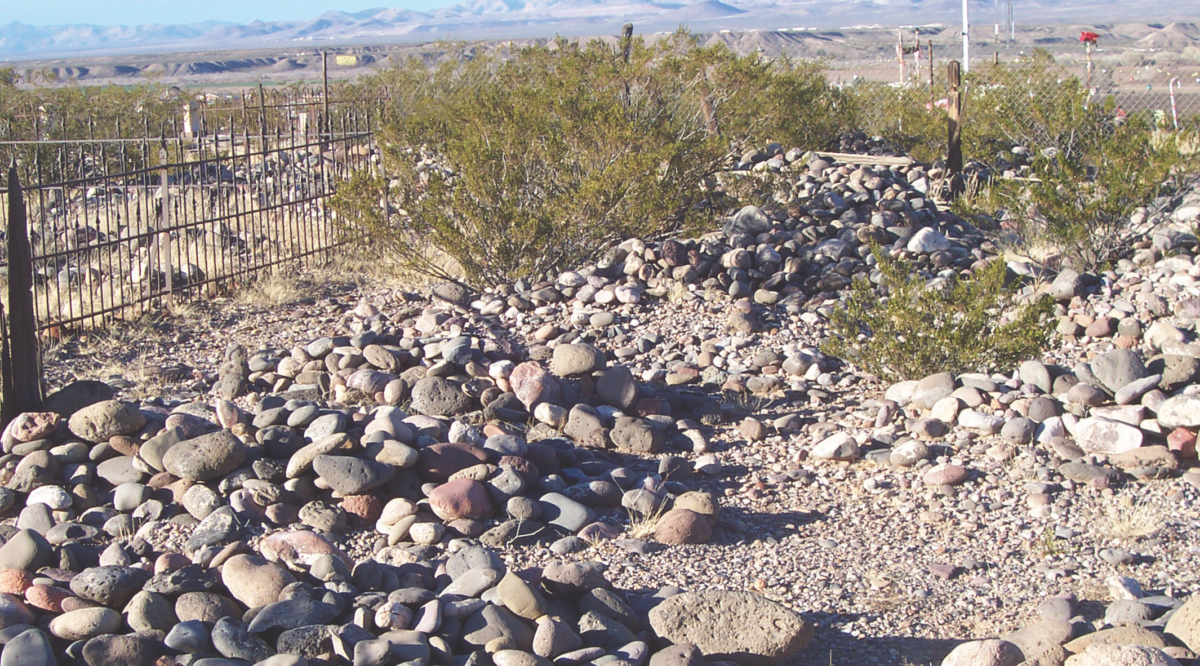A Mormon freighter named Herbert, who worked the area around Fort Thomas, Arizona Territory, was driving a wagon to Globe on March 2, 1890, when five Tonto Apache Indians attacked him some 6 miles north of the fort. It would be Herbert’s last run.
The renegades murdered him, stole the horses, burned the wagon and cut the telegraph wire. When Col. Benjamin Grierson learned of the ambush, he ordered Lt. Powhatan Clarke, a Medal of Honor recipient who had fought in the Geronimo campaign, to make every effort to capture or destroy the murderers.
Clarke and a 10-man detachment of buffalo soldiers from Troop K of the 10th Cavalry packed a day’s rations and immediately rode to the site of the ambush. Joining them in the field from the San Carlos Apache Indian Reservation was 10th Cavalry Lt. James Watson with several 4th Cavalry soldiers and Indian scouts.
The scouts discovered hoofprints leading northwest toward the Salt River, so Lts. Clarke and Watson headed their men in that direction. It was tough going. They soon ran low on rations, but a generous rancher donated a cow, coffee and salt to the cause, and then Sergeant Alexander Cheatham arrived with reinforcements and rations after an all-night ride from San Carlos.
GET HISTORY’S GREATEST TALES—RIGHT IN YOUR INBOX
Subscribe to our HistoryNet Now! newsletter for the best of the past, delivered every Monday and Thursday.
A CHASE FOR 250 MILES
For several days and nights the detachment followed what Grierson called “the rough, broken mountains and plains of Arizona.” After a meandering chase of some 250 miles, the lieutenants and their men picked up the trail of the Apaches on March 7 in Salt River Canyon. To improve their speed over that rough terrain, the fugitives had killed their horses and continued their flight afoot.
The officers ordered their Indian scouts to likewise dismount, forge ahead and try to catch the Tontos. The scouts did just that and soon exchanged rifle shots with the renegades. The combined force of scouts and soldiers finally cornered the fugitives amid a tangle of boulders near the mouth of Cherry Creek, forcing their retreat under heavy fire into a shallow cave. In the exchange one of the Tontos took a bullet to the right eye.
Clarke and a party of scouts and soldiers rushed the cave entrance, only to be met with a fusillade of bullets, one of which passed through the lieutenant’s hat. Indian scout Sgt. Rowdy mortally wounded the shooter. Meanwhile, Sgt. William McBryar put on a fine display of marksmanship by firing at a rock near the cave entrance to splatter the holdouts with lead and splintered rock.
The troopers and scouts were preparing to charge when the surviving fugitives surrendered. Among them was El-chees-choos, considered a troublemaker at San Carlos.
Sgts. Rowdy and McBryar each received the Medal of Honor for their roles in what is often referred to as the Cherry Creek campaign. They were the last MOH recipients of the Apache wars. In a report to his superiors Grierson called the action “one of the most brilliant affairs of its kind” and praised “Lts. Watson and Clarke and the troops under their command for the persistent pursuit and complete success.”
The colonel added hopefully that the campaign “has had a very quieting effect upon, and will no doubt prove a lasting lesson to, the Indians of the San Carlos Agency.”
FOUND GUILTY AT TRIAL
After questioning the prisoners, Arizona authorities released all but El-chees-choos, who couldn’t provide an alibi regarding the freighter’s death. Despite his protestations of innocence and unlikely claim he’d been forced at gunpoint to join the others in their flight, a Solomonville jury found him guilty, and the judge sentenced him to hang on July 11, 1890.

Graham County Sheriff William Whelan made the preparations for the hanging and assigned two interpreters to El-chees-choos for the benefit of any jailhouse visitors. A local priest met with him several times and through the interpreters urged the condemned to repent and be baptized. El-chees-choos answered that as he was soon to die, he couldn’t see the benefit.
“I will see God himself and tell Him the whole story,” he added, “and if He thinks I ought to go to hell, it will be all right.”
On the morning of the hanging El-chees-choos turned down an offer of whiskey. “You people are trying to make fun of me,” he said. “I know that I have to die today. I don’t want any whiskey and don’t want to be made fun of.”
He did request a watermelon, which he ate while playing cards with other inmates. At 2 p.m. Sheriff Whelan and three deputies entered the jail to read the death warrant. The lawmen then marched the prisoner to the jail yard and the waiting scaffold. At that point El-chees-choos made his last request—for a cigarette.
The condemned sat on the courthouse steps as he smoked. Through an interpreter he quipped to the lawmen and gathered witnesses, “If you wish to keep Indians from killing white men, you had better hang all the Indians.”
On finishing his cigarette, El-chees-choos rose from the courthouse steps and walked alone to the platform to stand beneath the noose. He hummed a song as the lawmen bound his hands but stopped as they cinched the noose tight and drew a black hood over his head.
Deputy J.P. Robertson cut the rope that restrained the counterpoise weight, which dropped, causing El-chees-choos to be, as one Arizona newspaper put it, “jerked into the air and into eternity.”
There was no struggle, and after 14 minutes attending physician Dr. Albert H. Hoeffer pronounced him dead. The body was cut down and placed in a coffin for burial that evening.
The witnesses went on their way. There were no disturbances. The hanging of El-chees-choos was not the first in Graham County. On Dec. 28, 1883, authorities in Solomonville hanged three Chinese men—Ah Jim and Ah Queen, for murdering another Chinese man on May 2, 1883; and Poh Ah Dock, for murdering a countryman on June 9, 1883. They were the only Chinese men hanged in the wild and wooly territorial days.
historynet magazines
Our 9 best-selling history titles feature in-depth storytelling and iconic imagery to engage and inform on the people, the wars, and the events that shaped America and the world.






